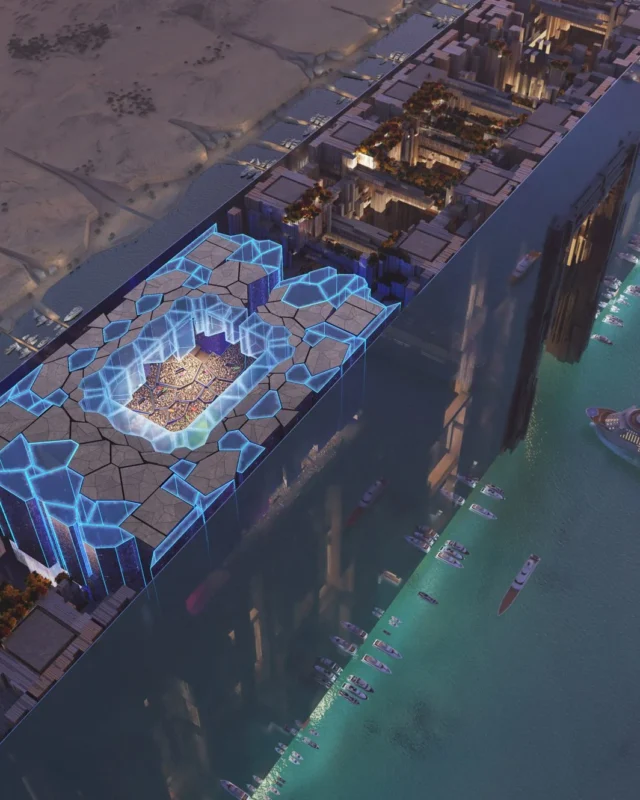Building Information Modeling (BIM) for Project Coordination, Efficiency, and Visualization in Saudi Construction
As Saudi Arabia’s construction industry continues to expand, fueled by Vision 2030 and mega-projects like NEOM and The Red Sea Project, Building Information Modeling (BIM) has emerged as a transformative tool. BIM offers numerous benefits, from enhancing project coordination and boosting efficiency to providing powerful visualization capabilities. By integrating digital representations of physical and functional characteristics into construction workflows, BIM is helping stakeholders deliver projects faster, more accurately, and with greater cost-effectiveness.
Several prominent companies in Saudi Arabia, such as Saudi Binladin Group, Saudi Aramco, Dar Al-Handasah, and Bechtel, are leveraging BIM to manage complex projects with ease. Their innovative use of BIM technology is setting new standards for the construction sector, particularly in project coordination, efficiency, and design visualization.
Improving Project Coordination with BIM
Effective coordination among stakeholders is essential for any construction project. Traditionally, miscommunication or delays in information sharing between architects, engineers, contractors, and clients often resulted in project delays and increased costs. Building Information Modeling (BIM) solves this issue by creating a centralized digital model that all stakeholders can access and update in real time. This allows for seamless communication and ensures that everyone involved is working from the same accurate data source.
For large-scale projects in Saudi Arabia, like the Jeddah Tower or the King Abdulaziz International Airport, BIM has been instrumental in streamlining collaboration across multiple teams. Leading companies such as Dar Al-Handasah and Bechtel use BIM to enhance coordination, allowing project stakeholders to visualize and understand how different systems—such as electrical, plumbing, and HVAC—interact within a building. This coordination reduces costly errors and ensures the smooth execution of complex projects.
Boosting Efficiency and Reducing Costs
BIM also plays a crucial role in improving construction efficiency and reducing costs. With the ability to create highly detailed 3D models, project managers can better plan, manage resources, and foresee potential challenges before construction begins. This allows for more accurate cost estimations, better scheduling, and reduced material wastage, which are critical in large projects such as the Riyadh Metro or the King Salman Energy Park.
Saudi companies like Saudi Aramco and Parsons Corporation are known for using BIM to enhance efficiency in project delivery. For instance, Parsons has implemented BIM to optimize project workflows, reduce design errors, and improve construction precision, particularly for large infrastructure projects like the NEOM development. The advanced simulation and analysis capabilities of BIM allow companies to identify design issues early on, preventing costly rework and reducing project timelines.
Enhancing Visualization and Design Flexibility
One of the most impressive features of Building Information Modeling (BIM) is its ability to offer enhanced visualization, giving stakeholders the ability to explore detailed 3D models of projects before construction even begins. This capability allows designers and clients to visualize the final product, making it easier to make informed decisions during the design phase.
For mega-projects such as King Salman Park or The Red Sea Project, this visualization capability is invaluable. Leading construction firms like SNC-Lavalin and AECOM use BIM to provide clients with immersive, real-time visualizations of their projects, allowing for design tweaks and material selections before any physical work starts. BIM’s visualization tools also help identify potential conflicts between systems in the design phase, such as structural or mechanical clashes, which can be resolved before construction begins.
![]()
Top BIM Companies Driving Saudi Arabia’s Construction Sector
Several leading companies are at the forefront of implementing BIM technology in Saudi Arabia’s construction sector. Companies such as Saudi Binladin Group, Dar Al-Handasah, and Consolidated Contractors Company (CCC) have integrated BIM to improve design accuracy, streamline project workflows, and enhance collaboration across all project stages. Additionally, organizations like Saudi Aramco and Parsons have utilized BIM to align with sustainable construction practices, ensuring that projects meet environmental standards while maximizing resource efficiency.
These top BIM companies have successfully applied the technology to high-profile projects such as the Riyadh Metro, King Salman Energy Park, and Jazan Refinery. Their use of BIM has demonstrated the effectiveness of digital modeling in enhancing project outcomes, boosting efficiency, and reducing risks in construction.
Building Information Modeling (BIM): A Catalyst for Saudi Arabia’s Future
As Saudi Arabia continues its ambitious infrastructure expansion under Vision 2030, the role of Building Information Modeling (BIM) will become even more essential. BIM is transforming how construction projects are designed, coordinated, and executed, providing a competitive edge for companies that adopt the technology. Whether it’s through enhancing project coordination, improving efficiency, or enabling advanced visualization, BIM is a critical tool for delivering high-quality projects on time and within budget.
For the Kingdom’s most complex projects, from NEOM to Jeddah Tower, BIM is ensuring that Saudi Arabia’s construction industry remains at the forefront of innovation, sustainability, and efficiency.



